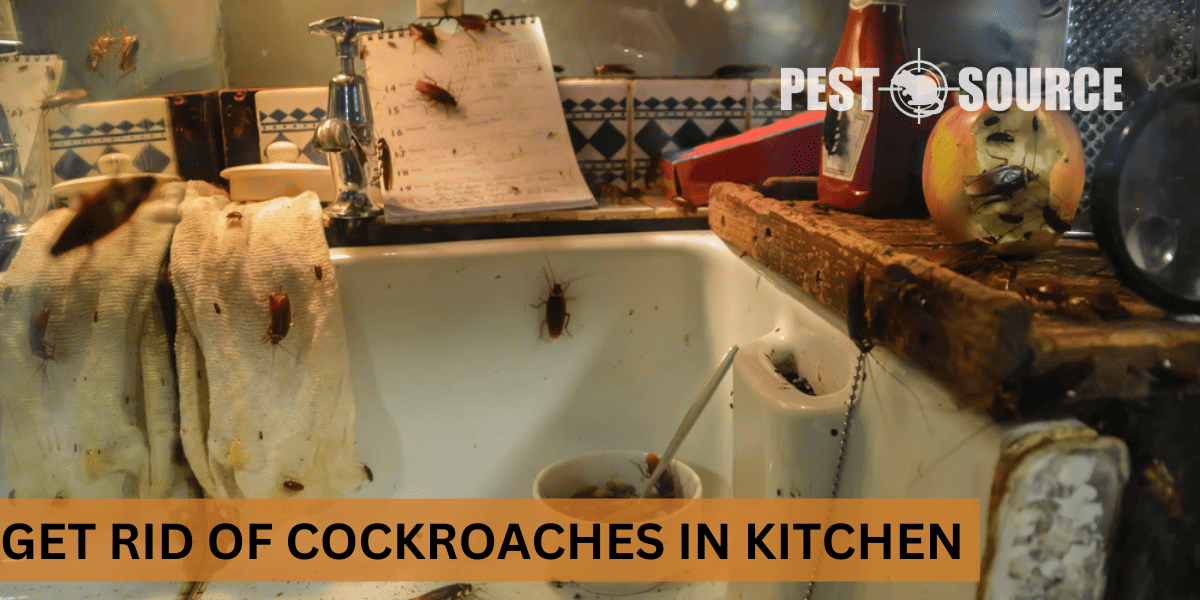To eradicate cockroaches in the kitchen, maintain cleanliness, store food properly, and use baits or natural repellents. This article offers practical tips and strategies tailored for the unique challenges of kitchen infestations.
POINTS
- Maintain a clean kitchen by wiping down surfaces, storing food in airtight containers, and managing garbage with tight-fitting lids to prevent cockroach infestations.
- Seal entry points by inspecting and caulking cracks around windows, doors, and utility pipes, and repair any damaged weather stripping or screens.
- Consider professional pest control if DIY methods fail, as professionals have access to more potent treatments and can offer customized solutions.
- Understand the health risks associated with cockroaches, such as the spread of diseases like salmonella and E. coli, and ensure thorough sanitization of surfaces and utensils after infestations.
- Employ ongoing preventative practices, including regular cleaning routines, reducing clutter, monitoring humidity, and conducting periodic inspections to keep the kitchen roach-free.
Identifying the Source of the Infestation
Identifying the source of a cockroach infestation is crucial to effectively dealing with the problem. Cockroaches often enter homes in search of food, water, and shelter. Look for common entry points such as gaps around doors, windows, and where pipes penetrate walls. Check for signs of cockroaches like droppings, smear marks, and shed skins. Once you’ve found their entry points and hiding places, you can begin to target these areas specifically with your control methods.
Tips on Natural and Chemical Methods to Get Rid of Cockroaches
When it comes to eliminating cockroaches, you have a choice between natural and chemical methods. Natural methods include:
- Boric acid: A natural powder that is toxic to cockroaches when ingested.
- Diatomaceous earth: A fine powder that can dehydrate and kill cockroaches upon contact.
- Essential oils: Some oils, like peppermint, can act as repellents.
Chemical methods, on the other hand, often provide a more immediate solution:
- Baits: Poisoned bait can attract and kill cockroaches, which then carry the poison back to their nests.
- Insecticide sprays: Sprays can quickly kill cockroaches on contact and deter new ones from entering the area.
- Gel baits: These can be applied in cracks and crevices where cockroaches hide.
Always follow the manufacturer’s instructions and consider the safety of pets and children when using chemical treatments.
Identifying Signs and Causes of Roach Infestations in the Kitchen
Recognizing the signs of a roach infestation is the first step in addressing the problem. Droppings, which look like small, dark specks, egg cases, and a distinctive musty odor are all indicators of a cockroach presence. Additionally, seeing roaches during the day or when cooking can suggest a large infestation, as these nocturnal pests typically hide during daylight hours.
Common Reasons Why Cockroaches Are Attracted to Kitchens
Cockroaches are attracted to kitchens due to:
- Food sources: Crumbs, spills, and pet food can attract roaches.
- Moisture: Leaky pipes and damp areas provide the water they need.
- Warmth: Kitchens are typically warm, which cockroaches prefer for nesting.
By addressing these attractants, you can make your kitchen less inviting to cockroaches.
Implications of Daytime Sightings
Daytime sightings of cockroaches can be particularly alarming, as it often indicates a large population that has outgrown its nighttime hiding spots. This is a clear sign that immediate action is needed to control and prevent further infestation.
Dealing with Different Types of Cockroaches in the Kitchen
Different types of cockroaches may require different strategies. For example, small varieties such as the German cockroach can be more challenging to control due to their rapid breeding. Identification of the species is key, as some may be more susceptible to certain treatments than others.
Identifying and Targeting Various Cockroach Species
Identifying the species of cockroach in your kitchen will help tailor your eradication efforts:
- German cockroaches: Small and light brown, often found near moisture.
- American cockroaches: Larger and reddish-brown, commonly found in basements or near food storage.
- Oriental cockroaches: Dark and shiny, often found in damp areas.
Each species may require a different approach, so knowing which you’re dealing with is crucial.
Preventative Measures and Long-Term Strategies for a Roach-Free Kitchen
Maintaining a roach-free kitchen requires a proactive approach. It’s not just about getting rid of the pests; it’s also about creating an environment that discourages their return. Here are some preventative measures and long-term strategies to keep your kitchen cockroach-free.
Maintaining a Clean Kitchen
A clean kitchen is your first line of defense against cockroaches. Here are key practices to maintain:
- Wipe down surfaces: Clean up crumbs and spills immediately.
- Store food properly: Use airtight containers to store food.
- Manage garbage: Take out the trash regularly and use bins with tight-fitting lids.
Sealing Entry Points
Cockroaches can exploit even the smallest cracks to enter your kitchen. To prevent this:
- Inspect your home: Look for cracks and crevices around windows, doors, and utility pipes.
- Use sealants: Apply caulk to seal any gaps you find.
- Check for damage: Repair any damaged weather stripping or screens.
Regular Cleaning Routines
A regular cleaning schedule can go a long way in preventing cockroach infestations:
- Sweep and vacuum: Regularly clean floors to remove food particles.
- Deep clean: Periodically deep clean your kitchen, focusing on hard-to-reach areas where cockroaches might hide.
- Declutter: Reduce clutter where cockroaches can hide and breed.
Ongoing Practices
Implementing ongoing practices will help ensure that your kitchen remains an unattractive environment for cockroaches:
- Inspect groceries: Check bags and boxes for cockroaches before bringing them into your home.
- Monitor humidity: Use dehumidifiers in damp areas to reduce moisture.
- Regular inspections: Periodically check for signs of cockroaches, even if you haven’t seen any recently.
Professional Pest Control and DIY Solutions
Sometimes, despite your best efforts, you might need to escalate your approach to cockroach control. Here’s when and how to seek professional help and some DIY solutions you can try.
When DIY Methods Are Insufficient
If you’ve tried various DIY methods without success, it may be time to call in professional pest control. Professionals have access to more potent treatments and can offer customized solutions for your specific infestation.
Creating Homemade Traps
Homemade traps can be an effective way to monitor and reduce cockroach populations:
- Baited jar traps: Coat the inside of a jar with petroleum jelly and place bait at the bottom.
- Sticky traps: Place these in areas where you’ve seen cockroach activity to catch and remove individuals.
Using Natural Repellents
Natural repellents can deter cockroaches without the use of harsh chemicals:
- Bay leaves: Scatter these in cupboards as a natural deterrent.
- Cucumber slices: The smell can repel cockroaches when placed in affected areas.
Evaluating Effectiveness
Regularly evaluate the effectiveness of your chosen methods. If you’re not seeing a reduction in cockroach activity, it may be time to adjust your strategy or seek professional help.
Health Risks, Hygiene, and Understanding Cockroach Behavior
Cockroaches in the kitchen are not just a nuisance; they pose significant health risks. They can carry bacteria and pathogens that can contaminate food and surfaces.
Highlighting Health Risks
Cockroaches can spread diseases such as salmonella and E. coli, which can lead to food poisoning and other health issues. Their droppings and shed skin can also cause allergic reactions and asthma in some individuals.
Tips on Sanitizing Surfaces and Utensils
After dealing with an infestation, it’s important to sanitize your kitchen:
- Use disinfectants: Clean all surfaces with a disinfectant to kill any lingering germs.
- Wash utensils: Thoroughly wash all utensils and cookware that may have come into contact with cockroaches.
Understanding Cockroach Behavior
Understanding cockroach behavior can aid in effective eradication strategies:
- Nocturnal activity: Cockroaches are primarily active at night, so set traps and baits accordingly.
- Attraction to odors: They are attracted to food odors, so keep your kitchen odor-free.
- Hiding spots: They prefer dark, secluded areas, so focus your control efforts on these spots.
By following these strategies and maintaining vigilance, you can keep your kitchen safe from cockroaches and protect the health of your household. Remember, persistence and consistency are key in preventing and controlling pest infestations.



